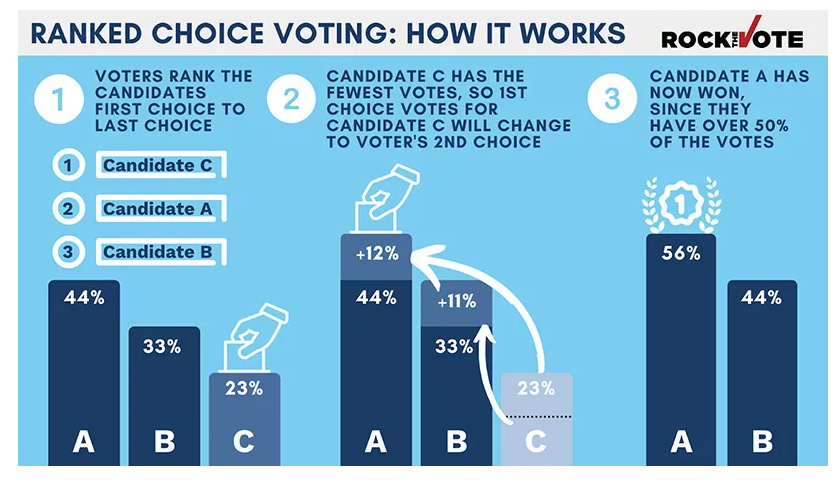In response to Rep. Christopher Rosario’s opinion editorial, “We must ensure Ranked Choice Voting works for all of CT,” published in The Connecticut Mirror on July 26, I would like to address the concerns raised about the potential impact of Ranked Choice Voting (RCV) on Connecticut’s diverse communities.
I could not agree more with Rep. Rosario that any new voting process must work for all of Connecticut’s residents including those in our state’s cities from Bridgeport to Groton, a city that I represent. I am so thankful to my colleague for raising these questions as a part of the Governor’s Working Group process. These questions were raised at the latest meeting of the working group and evidence was presented by urban representatives that RCV can significantly enhance voter engagement and representation, particularly for underrepresented communities.
The diverse group of leaders presenting these findings included Melissa Mark-Viverito, former speaker of the New York City Council; Amanda Farias, Majority Leader of the New York City Council; Victoria Pelletier, Council member of the Portland, Maine City Council, National Partnerships Manager at RepresentWomen; and Katie Usalis, Partnerships Director at RepresentWomen.
Addressing voter confusion and disenfranchisement: Rep. Rosario brings up the potential for voter confusion, especially among non-English speakers. This concern is valid, but other jurisdictions have effectively managed this by engaging in comprehensive voter education campaigns.
In New York City’s first RCV election, 95% of voters, including over 90% of every racial group, found RCV simple to use. Similarly, 85% of Alaska voters and 81% of Utah voters reported that RCV was easy to understand. New York City’s voter education campaign, which included a $500,000 advertising effort across multiple platforms and educational materials in 13 languages, significantly improved voter turnout and understanding. These successful strategies can be implemented in Connecticut to ensure that all voters are well-informed and confident in using RCV.
Enhancing representation for marginalized communities: Concerns that RCV might reduce the political influence of marginalized communities are understandable, but evidence suggests the inverse is the typical outcome.
A 2018 study in California found that RCV led to an increase in the number of candidates of color and improved their chances of winning. FairVote’s 2021 report, analyzing over 398 RCV contests, found that candidates of color benefit from the RCV process without penalties when running against candidates of the same race. Additionally, RepresentWomen’s 2020 report concluded that women and people of color win at higher rates in RCV elections compared to plurality elections. Notably, cities like Minneapolis, St. Paul, and Salt Lake City have elected their first majority-people of color city councils through RCV, demonstrating its potential to enhance representation.
Addressing concerns of gentrification and empowerment of affluent communities: Rep. Rosario raises the concern that RCV might inadvertently empower more affluent and gentrified communities.
However, a 2024 report from FairVote examining 448 RCV elections over 20 years found that candidates of color benefit significantly from the RCV counting process, gaining more support as lower-performing candidates are eliminated. This process allows multiple candidates of color to run without splitting the vote, thus enhancing their chances of winning. For example, Dan Goldman’s primary race in New York illustrated how RCV could have aggregated votes from similar candidates, potentially altering the election outcome to better reflect the community’s diverse preferences.
Impact on voter turnout: The concern about lower voter turnout in urban areas compared to suburban areas is another important issue. Data from the six largest cities using RCV show increased voter turnout with RCV. Turnout was consistently higher in RCV cities than in non-RCV cities during midterm mayoral elections. A 2020 study found that RCV led to a 9.6% increase in turnout in the Minneapolis-St. Paul area. Additionally, research indicates that RCV reduces vote drop-off in competitive runoffs and increases overall civic engagement.
Conclusion: Ranked Choice Voting has proven to be a powerful tool in enhancing voter engagement, increasing representation of marginalized communities, and fostering a more inclusive and equitable electoral process.
As Connecticut moves forward with the implementation of RCV, it is crucial to ensure robust voter education and outreach, particularly in urban and multilingual communities. By doing so, we can ensure that RCV works for all Connecticut residents, creating a more representative and democratic system for everyone.
Let’s embrace this opportunity to be a national leader in electoral reform, ensuring that every vote truly counts and every voice is heard. Future meetings of the Governor’s Working Group on Ranked Choice Voting are planned for September 6, October 4, and November 8 and will be broadcast on CT-N. I encourage all Connecticut residents to tune in to learn more.
State Rep. Aundré Bumgardner is serving his second non-consecutive term as the State Representative of the 41st House District, representing the people of Groton and Stonington. Bumgardner also serves as a member of the Governor’s Working Group on Ranked Choice Voting and as Secretary of the CT General Assembly’s Black and Puerto Rican Caucus.

